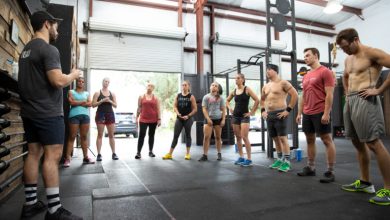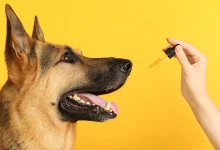What Are the Most Effective Treatments for Spider Veins?
What Are the Most Effective Treatments for Spider Veins?

1. Introduction
Spider veins, though generally benign, can be a source of discomfort and cosmetic concern. Fortunately, a variety of treatments are available to effectively address and reduce their appearance. This article provides a comprehensive overview of the most effective treatments for spider veins, helping you make an informed decision about which option may be best suited for your needs.
2. Understanding Spider Veins
2.1 What Are Spider Veins?
Spider Veins treatments, medically known as telangiectasias, are small, dilated blood vessels that appear close to the skin’s surface. They are typically red, blue, or purple and resemble a spider’s web or tree branches. Spider veins are most commonly found on the legs and face but can appear anywhere on the body.
2.2 Common Symptoms and Causes
While spider veins are primarily a cosmetic concern, they can sometimes cause minor symptoms such as itching or discomfort. Common causes of spider veins include:
- Genetics: A family history of spider veins can increase your risk.
- Hormonal Changes: Pregnancy, menopause, and the use of birth control pills can contribute to their development.
- Lifestyle Factors: Prolonged standing or sitting, obesity, and a sedentary lifestyle are known risk factors.
- Aging: As you age, veins can weaken and become more visible.
3. Overview of Treatment Options
3.1 Laser Therapy
Laser therapy is a popular method for treating spider veins. It involves using a focused beam of light to target and destroy the veins without affecting the surrounding skin.
How It Works: The laser emits a concentrated beam of light that is absorbed by the blood vessels. This light energy heats up and damages the vein walls, causing them to collapse and eventually be absorbed by the body.
Benefits:
- Non-invasive
- Minimal downtime
- Effective for small to medium-sized veins
Considerations:
- Multiple sessions may be required
- Results can take several weeks to become visible
3.2 Sclerotherapy
Sclerotherapy is a minimally invasive procedure that involves injecting a sclerosing solution directly into the spider veins. This solution irritates the vein walls, causing them to collapse and be reabsorbed by the body.
How It Works: A fine needle is used to inject a solution, usually a saline or chemical agent, into the affected veins. The solution causes the veins to harden and eventually fade away.
Benefits:
- Highly effective for both small and larger veins
- Minimal discomfort
- Requires only a few sessions
Considerations:
- Potential for temporary bruising and swelling
- Results may not be immediate; improvement typically occurs over several weeks
3.3 Radiofrequency Ablation
Radiofrequency ablation (RFA) uses radiofrequency energy to heat and destroy the affected veins. It is particularly useful for treating larger veins and is often used in combination with other treatments.
How It Works: A catheter is inserted into the vein, and radiofrequency energy is delivered through it. The heat generated by the radiofrequency energy causes the vein to collapse and seal shut.
Benefits:
- Effective for larger veins
- Minimally invasive
- Quick recovery time
Considerations:
- Requires specialized equipment and expertise
- May need multiple treatments for optimal results
3.4 Endovenous Laser Treatment (EVLT)
Endovenous Laser Treatment (EVLT) is a technique similar to radiofrequency ablation but uses laser energy to treat the veins. It is effective for treating larger veins and provides long-lasting results.
How It Works: A laser fiber is inserted into the vein through a catheter. The laser energy heats and seals the vein, causing it to collapse and be reabsorbed by the body.
Benefits:
- Effective for larger veins
- Minimal discomfort
- High success rate
Considerations:
- May require a few sessions
- Some patients may experience minor post-treatment discomfort
4. Comparing the Effectiveness of Treatments
4.1 Effectiveness of Laser Therapy
Laser therapy is effective for treating smaller spider veins and is often chosen for its non-invasive nature. Results are generally good, with many patients experiencing significant improvement after a few sessions.
4.2 Effectiveness of Sclerotherapy
Sclerotherapy is highly effective for both small and larger spider veins. It offers excellent results, with most patients seeing significant improvement after just one or two sessions. However, larger veins or more severe cases may require additional treatments.
4.3 Effectiveness of Radiofrequency Ablation
Radiofrequency ablation is particularly effective for treating larger veins and can provide long-lasting results. It is less commonly used for small spider veins but is a good option for veins that are resistant to other treatments.
4.4 Effectiveness of Endovenous Laser Treatment
EVLT is highly effective for larger veins and provides a durable solution. It is often used when other treatments have not yielded the desired results and is known for its high success rate.
5. Choosing the Right Treatment for You
5.1 Factors to Consider
When deciding on a treatment for spider veins, consider the following factors:
- Size and Location of Veins: Some treatments are better suited for small veins, while others are designed for larger or more complex cases.
- Personal Health and Medical History: Certain treatments may not be suitable for individuals with specific health conditions.
- Desired Results and Budget: Consider the effectiveness, cost, and potential need for multiple sessions.
5.2 Consulting a Specialist
Consulting with a qualified specialist, such as a dermatologist or a vascular surgeon, is crucial. They can assess your specific condition, recommend the most appropriate treatment options, and tailor a treatment plan based on your needs.
6. Potential Risks and Side Effects
6.1 Common Risks
- Laser Therapy: May cause temporary redness or swelling in the treated area.
- Sclerotherapy: Can lead to bruising, redness, or swelling. Rarely, small ulcers or skin discoloration may occur.
- Radiofrequency Ablation: Possible risks include skin burns or changes in skin pigmentation.
- Endovenous Laser Treatment: Minor risks include temporary discomfort and bruising.
6.2 Managing Side Effects
Most side effects are mild and temporary. Follow your healthcare provider’s post-treatment care instructions to minimize risks and promote healing. If you experience severe or persistent symptoms, contact your specialist promptly.
7. Costs and Insurance Coverage
7.1 Cost Breakdown
The cost of spider vein treatments varies depending on the type of treatment, the number of sessions required, and the location of the procedure. Laser therapy and sclerotherapy are generally less expensive than radiofrequency ablation and EVLT.
7.2 Insurance Considerations
Insurance coverage for spider vein treatments can vary. Some plans may cover treatments if they are deemed medically necessary, while others may classify them as cosmetic and not provide coverage. Check with your insurance provider to understand your benefits and potential out-of-pocket costs.
8. Conclusion
Spider veins, though often harmless, can be effectively treated using various methods, each with its advantages and considerations. Whether opting for laser therapy, sclerotherapy, radiofrequency ablation, or endovenous laser treatment, understanding your options and consulting with a healthcare professional can help you achieve the best results. By considering factors such as effectiveness, risks, costs, and personal health, you can make an informed decision and take steps towards clearer, healthier skin.









